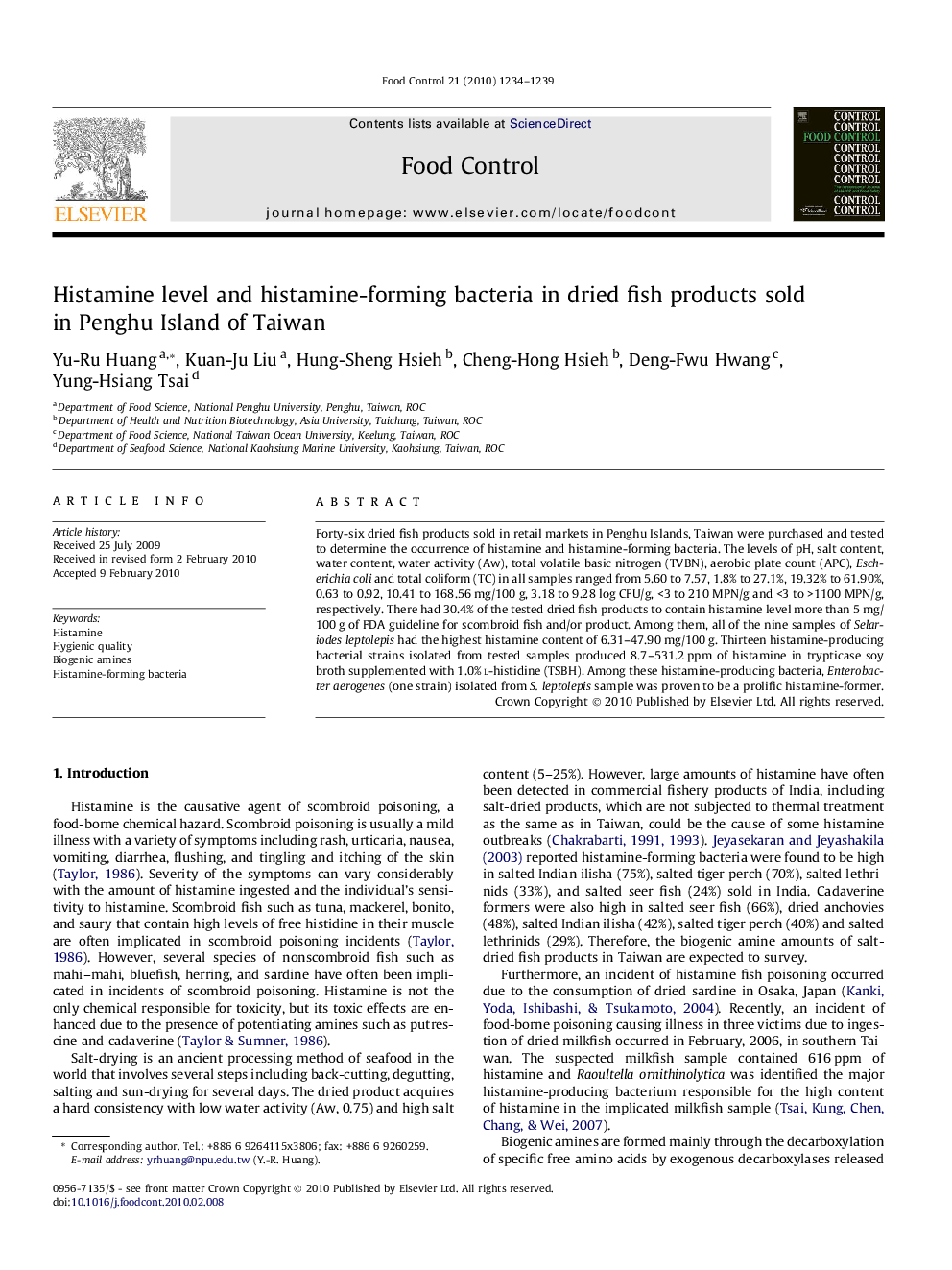| Article ID | Journal | Published Year | Pages | File Type |
|---|---|---|---|---|
| 4559542 | Food Control | 2010 | 6 Pages |
Forty-six dried fish products sold in retail markets in Penghu Islands, Taiwan were purchased and tested to determine the occurrence of histamine and histamine-forming bacteria. The levels of pH, salt content, water content, water activity (Aw), total volatile basic nitrogen (TVBN), aerobic plate count (APC), Escherichia coli and total coliform (TC) in all samples ranged from 5.60 to 7.57, 1.8% to 27.1%, 19.32% to 61.90%, 0.63 to 0.92, 10.41 to 168.56 mg/100 g, 3.18 to 9.28 log CFU/g, <3 to 210 MPN/g and <3 to >1100 MPN/g, respectively. There had 30.4% of the tested dried fish products to contain histamine level more than 5 mg/100 g of FDA guideline for scombroid fish and/or product. Among them, all of the nine samples of Selariodes leptolepis had the highest histamine content of 6.31–47.90 mg/100 g. Thirteen histamine-producing bacterial strains isolated from tested samples produced 8.7–531.2 ppm of histamine in trypticase soy broth supplemented with 1.0% l-histidine (TSBH). Among these histamine-producing bacteria, Enterobacter aerogenes (one strain) isolated from S. leptolepis sample was proven to be a prolific histamine-former.
